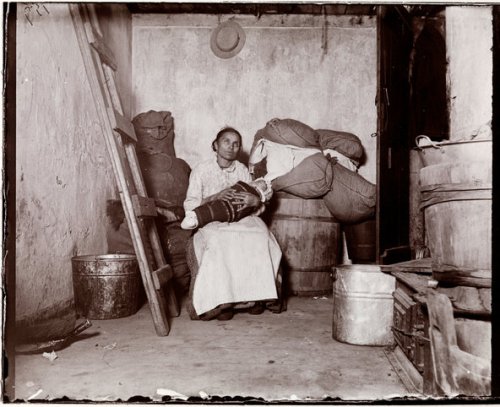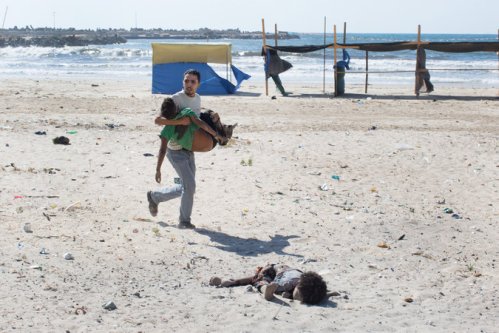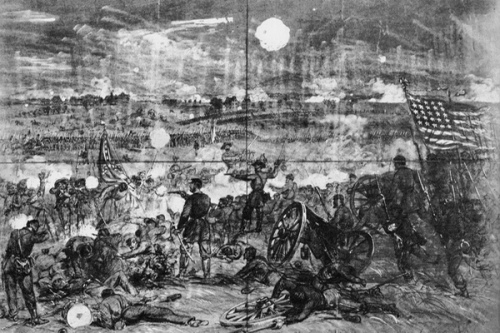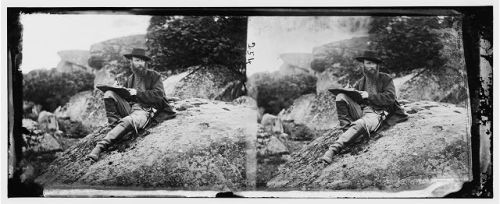By Christopher B. Daly
This weekend marked the general release of the terrific new film “Spotlight,” about the team of investigative journalists at the Boston Globe who broke the prize-winning story about the widespread abuse of children by Catholic priests. The film, as I noted in my review, is a much-needed valentine to traditional news media, praising their willingness to use their resources in pursuit of telling the truth and holding the powerful accountable.
“Spotlight” is already being hailed (to use a bit of journalese) as one of the best films of all time about journalism. Which raises the question:
What are the best films about journalism?
Here’s my annotated list:
[I like all of these films, for one reason or another, so I am not ranking them. Instead, they are arranged chronologically, which makes some interesting points about the evolving view of journalists over time. I had never noticed how many of these come in clusters, which must be a lagging indicator of something.]
I COVER THE WATERFRONT (1933)
Claudette Colbert plays a smuggler’s daughter who is being investigated by a reporter, played by Ben Lyon. Complications naturally ensue. Fun fact: The title song was recorded by Billie Holiday, Frank Sinatra and others.
HIS GIRL FRIDAY (1940)
Dir. Howard Hawks. My personal favorite. Watch Cary Grant and Rosalind Russell at the top of their games in a romp through Chicago journalism of ![MV5BMTM3ODQ2Mzg0MF5BMl5BanBnXkFtZTYwNjM3ODA5._V1_UX100_CR0,0,100,100_AL_]() the 1920s. HGF features an epically dense screenplay, as the two leads constantly talk over each other. One memorable zinger after another. From the play, “The Front Page,” written by journalists Ben Hecht and Charles MacArthur.
the 1920s. HGF features an epically dense screenplay, as the two leads constantly talk over each other. One memorable zinger after another. From the play, “The Front Page,” written by journalists Ben Hecht and Charles MacArthur.
FOREIGN CORRESPONDENT (1940)
Dir: Alfred Hitchcock. Joel McCrea plays a young American reporter in London on the eve of WWII, trying to expose enemy agents (as all good journalists just naturally do!). Ben Hecht is one of the writers, though uncredited.
CITIZEN KANE (1941)
The cinematic masterpiece from Orson Welles, who wrote, directed and ![MV5BMTQ2Mjc1MDQwMl5BMl5BanBnXkFtZTcwNzUyOTUyMg@@._V1_SY317_CR0,0,214,317_AL_]() starred. It’s a thinly veiled biography of William Randolph Hearst, who hated it and did all he could (which was a lot) to try to suppress it. Welles gets the last laugh. Screenplay co-credit goes to Herman J. Mankiewicz.
starred. It’s a thinly veiled biography of William Randolph Hearst, who hated it and did all he could (which was a lot) to try to suppress it. Welles gets the last laugh. Screenplay co-credit goes to Herman J. Mankiewicz.
WOMAN OF THE YEAR (1942)
The first of the nine Hepburn/Tracy films. Two rival reporters meet cute and marry not-so-cute. Kate Hepburn plays a version of the real-life columnist Dorothy Thompson. Spencer Tracy wishes his globe-trotting, multi-lingual wife were home a bit more often. Ring Lardner Jr. shares screenwriting credit.
GENTLEMAN’S AGREEMENT (1947)
Gregory Peck plays a journalist who decides to investigate anti-semitism by pretending to be Jewish himself. Peck at his righteous best. Screenplay by Moss Hart, based on novel by Laura Z. Hobson.
CALL NORTHSIDE 777 (1948)
Jimmy Stewart, who knew his way around a fedora, plays a Chicago reporter who re-opens a cold murder case in this film-noir drama.
SWEET SMELL OF SUCCESS (1957)
Burt Lancaster, depicts gossip columnist Walter Winchell. Tony Curtis, ![MV5BNTk2MzU2ODc3NV5BMl5BanBnXkFtZTcwNDU1MjkyMw@@._V1_UY105_CR6,0,105,105_AL_]() plays an oily, sycophantic p.r. agent. A noir masterpiece that explores the careers of people who don’t know how not to manipulate others. One of the screenwriting credits goes to playwright Clifford Odets.
plays an oily, sycophantic p.r. agent. A noir masterpiece that explores the careers of people who don’t know how not to manipulate others. One of the screenwriting credits goes to playwright Clifford Odets.
ALL THE PRESIDENT’S MEN (1976)
![MV5BODAxMTc4ODcxNF5BMl5BanBnXkFtZTcwNDY0NTAyMQ@@._V1_SY317_CR8,0,214,317_AL_]() The essential celebration of investigative reporting, starring Robert Redford and Dustin Hoffman as Bob Woodward and Carl Bernstein. The film dramatizes the real-life reporting of the Washington Post reporters that led to the downfall of President Nixon. Screenwriter William Goldman wrote the best line, uttered by Hal Holbrook, playing “Deep Throat” in a dark and empty parking garage: “Follow the money.”
The essential celebration of investigative reporting, starring Robert Redford and Dustin Hoffman as Bob Woodward and Carl Bernstein. The film dramatizes the real-life reporting of the Washington Post reporters that led to the downfall of President Nixon. Screenwriter William Goldman wrote the best line, uttered by Hal Holbrook, playing “Deep Throat” in a dark and empty parking garage: “Follow the money.”
NETWORK (1976)
Dir: Sidney Lumet. Starring: Faye Dunaway and William Holden. Featuring Peter Finch for his memorable freak-out live on television, urging viewers to join him in ranting: “I’m mad as hell and I’m not going to take it anymore!” Writer: Paddy Chayefsky
THE CHINA SYNDROME (1979)
Jane Fonda, Jack Lemmon, and a bearded Michael Douglas star in this drama about white-hat journalists exposing safety problems at a nuclear power plant. Very much in the shadow of the Three Mile Island incident of the same year.
ABSENCE OF MALICE (1981)
Dir. Sydney Pollack. Sally Field plays a young reporter who libels Paul Newman (horrors) by publishing leaked information about him that is false and harmful to his reputation. This one causes a lot of journalists to squirm.
THE YEAR OF LIVING DANGEROUSLY (1982)
Dir. Peter Weir. Mel Gibson and Sigourney Weaver. Australian reporter, assisted by Linda Hunt, covers Indonesia during a period of turmoil and finds time to romance Sigourney Weaver. Could be Gibson’s career high.
THE KILLING FIELDS (1984)
Sam Waterston depicting NYTimes correspondent Sydney Shanberg covering Cambodia during the appalling regime of the Khmer Rouge. Terrific performance by first-time actor Haing S. Ngor, portraying the Cambodian photojournalist Dith Pran.
BROADCAST NEWS (1987)
Dir. James L. Brooks. A romantic triangle involving William Hurt, Albert Brooks, and their boss, the incomparable Holly Hunter. Set in a ![MV5BMTMwMzg2Mzc1OV5BMl5BanBnXkFtZTYwNjY4ODk4._V1_UX100_CR0,0,100,100_AL_]() television newsroom, the main characters manage to address real journalistic issues without preachy speeches. Written by James L. Brooks, no relation to Albert. (who also wrote the newsroom-based TV shows Mary Tyler Moore and Lou Grant).
television newsroom, the main characters manage to address real journalistic issues without preachy speeches. Written by James L. Brooks, no relation to Albert. (who also wrote the newsroom-based TV shows Mary Tyler Moore and Lou Grant).
THE PAPER (1994)
Dir: Ron Howard (formerly Opie on Mayberry). Michael Keaton plays Henry Hackett, the city editor of a NYC tabloid, in a day-in-the-life about a journalist’s crusade for the truth at any cost: major fight with wife, lost job at the New York Times, etc. Highlight: the knock-down brawl with Glenn Close.
WAG THE DOG (1997)
Dir. Barry Levinson. An acidic satire of Washington’s manipulation of the mass media. Starring Robert DeNiro as a political operative who enlists a Hollywood producer (Dustin Hoffman) to gin up a photogenic war to divert public attention from scandal. Hoffman envisions was as “a pageant.” From the book by Larry Beinhart.
FEAR AND LOATHING IN LAS VEGAS (1998)
Dir.: Terry Gilliam.
Benicio del Toro plays Dr. Gonzo himself. In a masterpiece of understatement, IMDb tries to gets its arms around this film this way: “An oddball journalist and his psychopathic lawyer travel to Las Vegas for a series of psychedelic escapades.” That about sums it up. From the book by HST.
![MV5BMTk4NjQwNTc0OV5BMl5BanBnXkFtZTYwOTQzNTA3._V1_SY317_CR3,0,214,317_AL_]()
THE INSIDER (1999)
Starring Russell Crowe and Al Pacino. Based on CBS investigation into Big Tobacco. Crowe plays a chemist-turned-whistleblower, and Pacino plays TV producer Lowell Bergman as a blow-hard. Christopher Plummer portrays a TV reporter based on Mike Wallace of CBS’s “60 Minutes” – who did not appreciate the insinuation that he pulled punches. Based on Marie Brenner’s article in Vanity Fair called “The Man Who Knew Too Much.”
ALMOST FAMOUS (2000)
Writer/director Cameron Crowe wonders what it would have been like to be a teenager who gets to write a story for Rolling Stone that involves traveling with a rock band on tour. Starring Kate Hudson as the allusive groupie Penny Lane.
SHATTERED GLASS (2003)
The sad, miserable story of some guy (I don’t want to even use his name) who bamboozled his editors at The New Republic for an unforgivably long time. The guy’s story pitches were too good to be true, alas. Partial writing credit: journalist Buzz Bissinger.
CAPOTE (2005) ![MV5BMTczMzU0MjM1MV5BMl5BanBnXkFtZTcwMjczNzgyNA@@._V1_SY317_CR0,0,214,317_AL_]()
In one of his last major roles, Philip Seymour Hoffman does a star turn as the writer Truman Capote as he undertakes the reporting that turned into the non-fiction novel “In Cold Blood.” Catherine Keener plays the young Nelle Harper, Capote’s sidekick and better known as the author Harper Lee of “To Kill a Mockingbird.”
GOOD NIGHT, AND GOOD LUCK (2005)
Dir. George Clooney. David Straithairn plays Edward R. Murrow in this heroic biopic. Good as far as it goes, but it pulls punches on what happened to Murrow after he took on Sen. Joseph McCarthy. (CBS sidelined Murrow because he was too overtly political.) Clooney wrote it, too.
THE DEVIL WEARS PRADA (2006)![MV5BMTMyNjk4Njc3NV5BMl5BanBnXkFtZTcwNDkyMTEzMw@@._V1_SX80_CR0,0,80,80_]()
Meryl Streep plays an imperious editor of a woman’s high-fashion magazine (a la Anna Wintour at Vogue), and Anne Hathaway plays her plucky assistant. Terrific cast.
FROST/NIXON (2008)
A dramatization of the real-life interviews conducted by British talk-show host David Frost with disgraced former president Richard Nixon (see “All the President’s Men”). Frank Langella turns in a very credible Nixon. Fun fact: the role played by Oliver Platt in the film was played in real life by former BU Journalism professor Bob Zelnick.
STATE OF PLAY (2009)
Replacing Brad Pitt (who backed out), Russell Crowe plays an old-school Washington reporter covering the death of a congressional aide, with help from perky blogger Rachel McAdams, who tries to teach the old dog Crowe some new reporting tricks found on this thing called the Internet. Fun cameos of actual DC reporters, including Woodward.
SPOTLIGHT (2015)
Dir. Tom McCarthy. With help from screenwriter Josh Singer, McCarthy delivers an appreciative bouquet to traditional “accountability” journalism. Based on the true story of the Pulitzer-winning investigative reporting team at the Boston Globe who exposed the rampant sexual abuse and extensive cover-up within the Boston Catholic archdiocese.
* * * * * *
Honorable mention, TV series:
The Wire, Season 5
Newsroom
Lou Grant
Superman (George Reeves)
See a mild-mannered reporter at The Daily Planet, Clark Kent, turn into a righteous super hero. If only all reporters could be caped crusaders.
Honorable mention, documentaries:
Reporting America at War
Control Room
Around the World in 72 Days
Outfoxed
[For more info, see the website Image of Journalism in Popular Culture at USC]
Filed under:
history,
Journalism,
news,
Uncategorized Tagged:
films about journalism,
Hollywood,
journalism,
journalism history,
photojournalism ![]()
![]()















 –There is the story behind another famous Vietnam war photo — the “napalm girl” photo of 1972, taken by photojournalist Nick Ut, a Vietnamese native who was working for the AP at the time. As with Kevin Carter, few people who saw this photo ever learned that Ut put his camera down and render aid that probably saved the girl’s life. Here is a
–There is the story behind another famous Vietnam war photo — the “napalm girl” photo of 1972, taken by photojournalist Nick Ut, a Vietnamese native who was working for the AP at the time. As with Kevin Carter, few people who saw this photo ever learned that Ut put his camera down and render aid that probably saved the girl’s life. Here is a 




















 the 1920s. HGF features an epically dense screenplay, as the two leads constantly talk over each other. One memorable zinger after another. From the play, “The Front Page,” written by journalists Ben Hecht and Charles MacArthur.
the 1920s. HGF features an epically dense screenplay, as the two leads constantly talk over each other. One memorable zinger after another. From the play, “The Front Page,” written by journalists Ben Hecht and Charles MacArthur. starred. It’s a thinly veiled biography of William Randolph Hearst, who hated it and did all he could (which was a lot) to try to suppress it. Welles gets the last laugh. Screenplay co-credit goes to Herman J. Mankiewicz.
starred. It’s a thinly veiled biography of William Randolph Hearst, who hated it and did all he could (which was a lot) to try to suppress it. Welles gets the last laugh. Screenplay co-credit goes to Herman J. Mankiewicz. plays an oily, sycophantic p.r. agent. A noir masterpiece that explores the careers of people who don’t know how not to manipulate others. One of the screenwriting credits goes to playwright Clifford Odets.
plays an oily, sycophantic p.r. agent. A noir masterpiece that explores the careers of people who don’t know how not to manipulate others. One of the screenwriting credits goes to playwright Clifford Odets. The essential celebration of investigative reporting, starring Robert Redford and Dustin Hoffman as Bob Woodward and Carl Bernstein. The film dramatizes the real-life reporting of the Washington Post reporters that led to the downfall of President Nixon. Screenwriter William Goldman wrote the best line, uttered by Hal Holbrook, playing “Deep Throat” in a dark and empty parking garage: “Follow the money.”
The essential celebration of investigative reporting, starring Robert Redford and Dustin Hoffman as Bob Woodward and Carl Bernstein. The film dramatizes the real-life reporting of the Washington Post reporters that led to the downfall of President Nixon. Screenwriter William Goldman wrote the best line, uttered by Hal Holbrook, playing “Deep Throat” in a dark and empty parking garage: “Follow the money.” television newsroom, the main characters manage to address real journalistic issues without preachy speeches. Written by James L. Brooks, no relation to Albert. (who also wrote the newsroom-based TV shows Mary Tyler Moore and Lou Grant).
television newsroom, the main characters manage to address real journalistic issues without preachy speeches. Written by James L. Brooks, no relation to Albert. (who also wrote the newsroom-based TV shows Mary Tyler Moore and Lou Grant).










